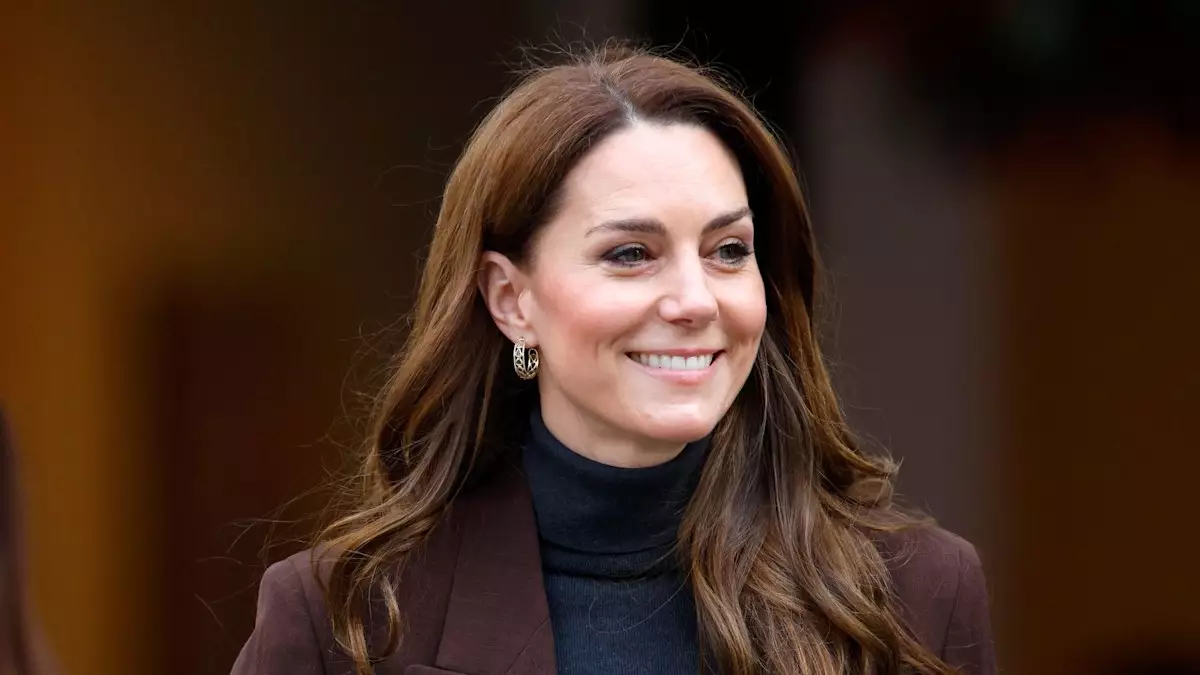In recent weeks, public interest in the fashion choices of the Princess of Wales, Kate Middleton, has surged once more. Her first public engagement following renewed speculation about Kensington Palace’s decision to withhold details about her outfits illustrated the tension between royal decorum and public curiosity. On her visit to the National Portrait Gallery, Kate donned a carefully curated outfit that spoke to her role as a royal yet also hinted at her evolving style narrative. With a focus on her new Shaping Us Framework initiative, aimed at enhancing social and emotional skills in the UK, the Princess’s fashion seemed both intentional and consequential.
The recent decision by Kensington Palace to keep tight-lipped about Kate’s wardrobe choices is not merely a matter of privacy; it marks a significant shift in royal tradition. Traditionally, media outlets and royal fashion enthusiasts eagerly await information on what the Princess wears, often dissecting each item for its cultural and economic significance. However, the absence of such information during her latest appearance sparked a flurry of speculation among fans and fashion experts alike.
Instead of deflecting attention away from her outfits, this new protocol has only intensified discussions around Kate’s clothing. Social media platforms, particularly Instagram, have seen a spike in conversations that examine her sartorial selections in greater detail. This unexpected outcome raises questions about the effectiveness of the palace’s strategy and its implications for the Princess’s public image.
During her recent visit, the Princess opted for a brown tailored wool jacket designed by Petar Petrov, a name that is new yet respected in the fashion world. Paired with a classic dark turtleneck jumper and wide-legged pinstripe trousers from the Italian label Max Mara, her outfit maintained a balance between sophisticated style and modern minimalism. Fashion aficionados quickly noted that these choices marked a departure from her typically British-centric wardrobe, a move that invites both criticism and praise.
Critics point out that the Princess’s outfit, while elegant, diverged from the expected British designs that have characterized her wardrobe for a substantial period. This has raised eyebrows, particularly given her historical role as a fashion ambassador for homegrown designers. Experts like Susan E. Kelley remark on the crisp, professional nature of the ensemble; however, the choice to don an Austrian label alongside an Italian one raises questions about Kate’s evolving style priorities.
The growing visibility of international designers in the Princess’s wardrobe could reflect broader changes in royal fashion representation. Petar Petrov, a Ukrainian-born designer with significant ties to the UK fashion scene, is known for his structured pieces that cater to a modern audience. His presence in Kate’s wardrobe indicates a willingness to embrace diverse influences, yet it also presents a challenge. Will her fashion choices continue to reflect a global perspective, or will she return to her roots of supporting British talent?
Moreover, the attire had been carefully selected for a significant occasion, launching her initiative aimed at promoting emotional and social growth in the community. This dual focus on agenda and appearance makes Kate’s fashion choices a nuanced topic, expanding beyond mere aesthetic considerations into the realms of social messaging and identity.
As Kate gradually resumes her public duties in the wake of her health challenges, the scrutiny of her outfit choices takes on an additional layer of complexity. Having recently announced her remission from cancer, this public return is not just a matter of style—it’s a reclaiming of her platform. While her wardrobe may reflect personal taste and contemporary trends, the deeper narrative about resilience and support for societal causes embellishes her role as a modern royal.
The evolving fashion narrative surrounding the Princess of Wales challenges traditional perspectives on royal attire, suggesting that personal expression can coalesce with public duties. The recent engagement was not just a display of fashion; it was a declaration of renewed purpose and adaptability in a rapidly changing world. As public interest grows, both in her initiatives and her fashion choices, one thing is clear: Kate Middleton is not just a royal figure but a symbol of modernity in the traditional confines of royalty. The future of her fashion journey will likely remain a subject of fascination that intertwines with her duties as a prominent public figure.

